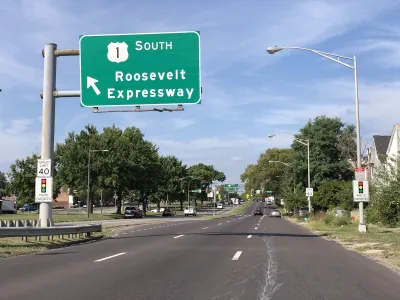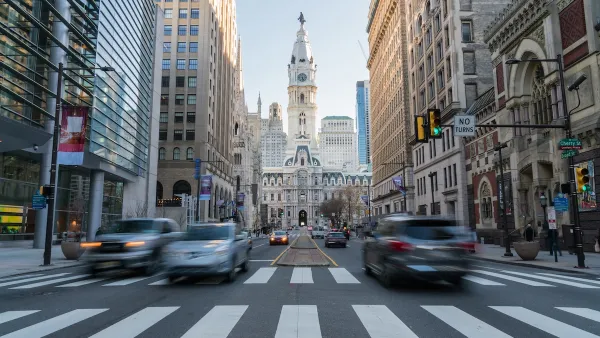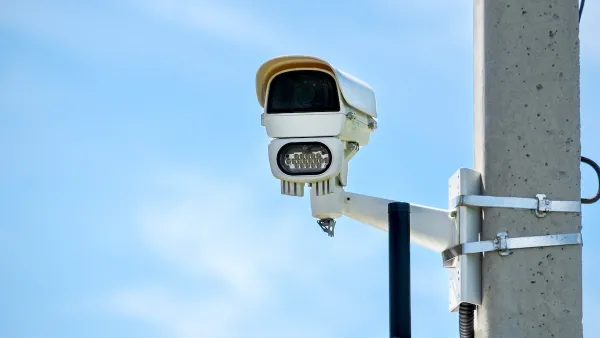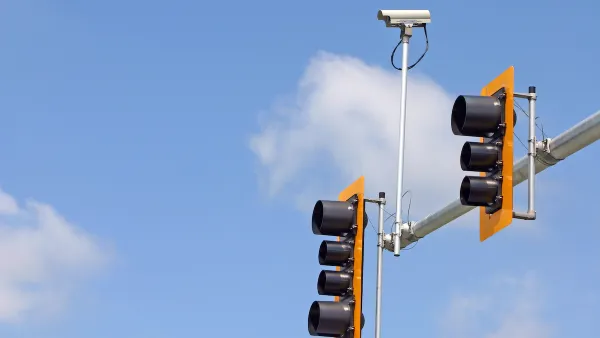Speeding violations plummeted after automated enforcement cameras were installed along Roosevelt Boulevard.

After Pennsylvania legalized speed cameras in 2018, “there was a substantial and statistically significant reduction in fatalities and crashes,” reveals a new study from the University of Pennsylvania.
As Maylin Tu explains in Next City, “Starting in June 2020, the city of Philadelphia placed cameras at eight locations and issued warnings to vehicles going 11 miles or more over the speed limit. After a 60-day grace period, speeding vehicles were fined.” The Philadelphia Parking Authority found a 90 percent reduction in speeding violations along the sections of Roosevelt Boulevard where the cameras were installed.
Speed cameras, sometimes known as automated traffic enforcement, are a controversial tool that some safety advocates say saves lives but which critics say disproportionately targets minority and low-income drivers and can be a ‘cash grab’ for cities rather than a true safety effort. “According to traffic safety advocates, it’s important for money to be reinvested directly into the community where the speed cameras are located. In the case of the pilot, the money is going to fund traffic safety projects, including $12 million to improve Roosevelt Boulevard by adding curb extensions and permeable pavement, among other upgrades.”
FULL STORY: Pennsylvania Legalized Speed Cameras. You Won’t Believe What Happened Next.

National Parks Layoffs Will Cause Communities to Lose Billions
Thousands of essential park workers were laid off this week, just before the busy spring break season.

Retro-silient?: America’s First “Eco-burb,” The Woodlands Turns 50
A master-planned community north of Houston offers lessons on green infrastructure and resilient design, but falls short of its founder’s lofty affordability and walkability goals.

Delivering for America Plan Will Downgrade Mail Service in at Least 49.5 Percent of Zip Codes
Republican and Democrat lawmakers criticize the plan for its disproportionate negative impact on rural communities.

Test News Post 1
This is a summary

Test News Headline 46
Test for the image on the front page.

Balancing Bombs and Butterflies: How the National Guard Protects a Rare Species
The National Guard at Fort Indiantown Gap uses GIS technology and land management strategies to balance military training with conservation efforts, ensuring the survival of the rare eastern regal fritillary butterfly.
Urban Design for Planners 1: Software Tools
This six-course series explores essential urban design concepts using open source software and equips planners with the tools they need to participate fully in the urban design process.
Planning for Universal Design
Learn the tools for implementing Universal Design in planning regulations.
EMC Planning Group, Inc.
Planetizen
Planetizen
Mpact (formerly Rail~Volution)
Great Falls Development Authority, Inc.
HUDs Office of Policy Development and Research
NYU Wagner Graduate School of Public Service





























